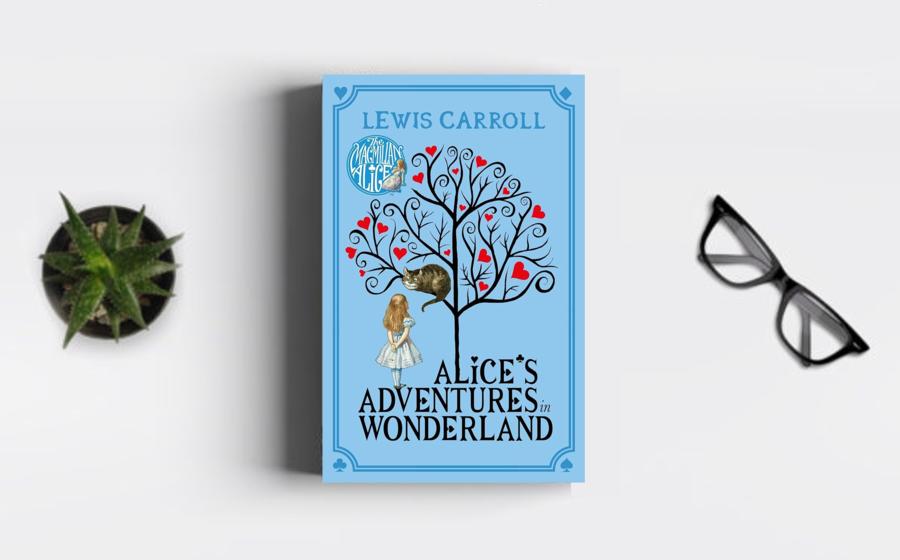"Alice's Adventures in Wonderland," written by Lewis
Carroll and first published in 1865, stands as a
timeless children's classic that has captivated readers
of all ages for over a century. This whimsical tale
takes readers on a fantastical journey into a world of
curious creatures, bizarre landscapes, and nonsensical
logic. Its enduring appeal lies in its ability to
transcend generations, sparking the imagination of
children and adults alike. As we explore the reasons
behind its timeless status, we discover that "Alice's
Adventures in Wonderland" remains a literary masterpiece
that continues to enchant and resonate with readers
worldwide.
At the heart of the book's
timelessness is its imaginative and surreal narrative.
Lewis Carroll, the pen name of Charles Lutwidge Dodgson,
crafted a story that defies conventional logic and
invites readers into a dreamlike realm where the
ordinary rules of reality are suspended. Alice's journey
down the rabbit hole and her encounters with whimsical
characters such as the White Rabbit, the Cheshire Cat,
and the Mad Hatter transport readers into a world where
anything is possible. This sense of wonder and
unpredictability has contributed to the enduring
fascination with the story, as readers of every
generation find themselves drawn into the enchanting and
unpredictable landscape of Wonderland.
The
character of Alice herself plays a crucial role in the
book's timelessness. Unlike many traditional fairy tale
heroines, Alice is portrayed as curious, assertive, and
independent. Her journey is marked by a series of
challenges and puzzles, and she navigates the
nonsensical world with a sense of determination and
curiosity. Alice's relatability as a curious and
resilient protagonist allows readers to connect with her
character on a personal level, transcending the
boundaries of time and cultural context. Her journey of
self-discovery and exploration resonates with readers of
all ages, making "Alice's Adventures in Wonderland" a
universal and enduring tale.
Carroll's mastery of
wordplay and clever use of language contribute
significantly to the book's timeless appeal. The story
is filled with puns, whimsical poems, and playful
language, creating a linguistic playground that delights
readers young and old. The clever use of language not
only adds to the overall charm of the narrative but also
allows the book to be enjoyed on multiple levels.
Children revel in the whimsical sounds and absurd
wordplay, while adults appreciate the clever wit and
subtle satire embedded in Carroll's linguistic choices.
This dual-layered approach to language ensures that
readers of varying ages can continue to find delight and
amusement in the text throughout different stages of
their lives.
The iconic and eccentric characters
populating Wonderland have become cultural touchstones,
contributing to the book's enduring popularity. From the
enigmatic Cheshire Cat with its mischievous grin to the
eccentric and tea-obsessed Mad Hatter, these characters
have transcended the pages of the book to become
archetypal figures in popular culture. The White
Rabbit's hurried sense of urgency, the Queen of Hearts'
infamous proclamation, "Off with their heads!" and the
Caterpillar's languid wisdom are just a few examples of
characters and phrases that have become ingrained in the
collective imagination. The richness and memorability of
these characters have solidified the book's status as a
timeless classic.
Carroll's exploration of
absurdity and nonsense serves as a source of perpetual
fascination. Through the whimsical and nonsensical
nature of Wonderland, the author invites readers to
question the logic and rules that govern the world. The
surreal scenarios, riddles without solutions, and
whimsical characters challenge the reader's perception
of reality, sparking imaginative thought and encouraging
a willingness to embrace the absurd. This invitation to
explore the boundaries of imagination and reason has
ensured that "Alice's Adventures in Wonderland" remains
a source of delight for readers seeking an escape from
the ordinary.
The book's illustrations, most
notably those by Sir John Tenniel, play a pivotal role
in its enduring popularity. Tenniel's iconic
illustrations not only complement Carroll's narrative
but also enhance the overall visual appeal of the book.
The distinct and memorable depictions of characters and
scenes contribute to the lasting impression that
"Alice's Adventures in Wonderland" leaves on its
readers. The illustrations, intricately linked to the
text, have become inseparable from the narrative,
further solidifying the book's status as a timeless and
visually captivating classic.
The narrative's
exploration of the absurdities and challenges of growing
up adds a layer of depth that resonates with readers
across generations. Alice's journey in Wonderland can be
interpreted as a metaphor for the tumultuous experience
of childhood and the transitional phase of growing up.
The unpredictable and nonsensical nature of Wonderland
mirrors the uncertainties and challenges that accompany
the journey from childhood to adolescence. This thematic
richness allows readers to revisit the book at different
stages of their lives, finding new layers of meaning and
connection with Alice's journey as they navigate their
own paths of growth and self-discovery.
The
enduring popularity of "Alice's Adventures in
Wonderland" is also evident in its continuous adaptation
into various media forms. From stage plays and films to
ballets and animated productions, the story has found
new life and resonance in different artistic
expressions. Each adaptation brings a fresh perspective
to the beloved tale, ensuring that it remains relevant
and engaging for audiences in ever-evolving forms of
storytelling. The adaptability of the narrative to
different mediums contributes to its continued presence
in the cultural landscape.
The whimsical and nonsensical world of Wonderland continues to capture the hearts and imaginations of readers across generations. Whether experienced in childhood or revisited in adulthood, the story's ability to transport readers into a realm of wonder and curiosity ensures its enduring appeal as a literary masterpiece that stands the test of time.






